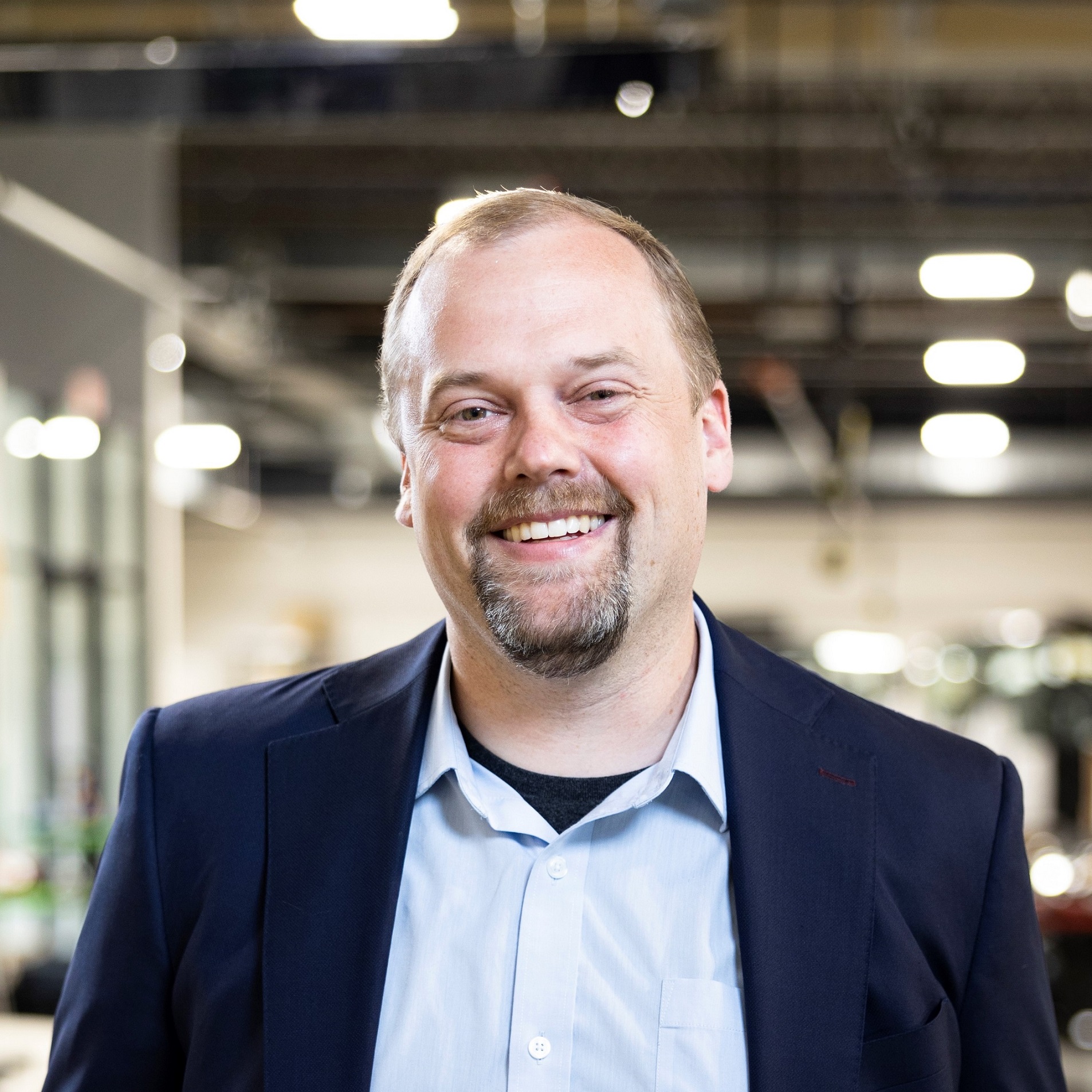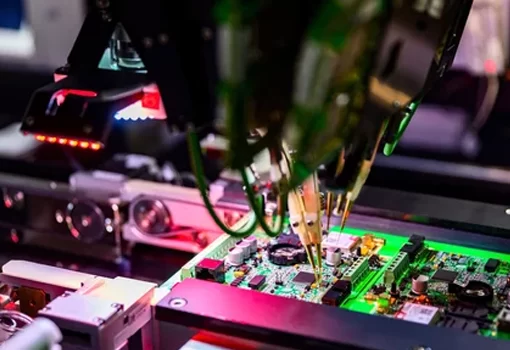
Edwin Olson, Co-founder and CEO of May Mobility, Inc.
Can you please describe May Mobility and its portfolio of solutions in a few words for our readers?
May Mobility is making cities more beautiful and accessible by transforming mobility with autonomous vehicles. Our technology solves the biggest problem in autonomous driving– safely handling the unexpected– by allowing our vehicles to imagine what might happen next. And we’re putting this technology to work with cities and businesses all over the world to improve the convenience, safety, and environmental impact of mobility. We take a fundamentally better approach to solving transportation challenges for customers. Our vehicles leverage Multi-Policy Decision-Making (MPDM), our proprietary system that simulates how all agents in the environment will react to different actions—in milliseconds. Our autonomous, self-driving vehicles provide first-mile and last mile microtransit services to cities, towns and rural communities.
How has the autonomous mobility market evolved post the pandemic? What are the biggest challenges that May Mobility had to overcome?
The pandemic gave us a glimpse of what a more livable environment in cities could look like. We all experienced fewer cars on the road, less traffic congestion, and cities which were friendlier for people to walk around and enjoy. Solving transportation challenges and inequities plays a big role in making more beautiful cities a permanent reality.
The pandemic also presented challenges to all shared transportation models – for example, public transit ridership in the US fell to a low of ~20% of previous levels in April 2020, and we saw an impact on our business as well. However, transit ridership has increased to nearly 70% of past levels. We believe that our next-generation autonomous shared mobility solutions will lead to even greater interest for shared mobility among more diverse communities.
[data source: https://transitapp.com/apta]
We have great partners in Toyota, Bridgestone, State Farm and Tokio Marine who believe in our vision and back our technology.
There is a lot of traction in the autonomous mobility market with pilots increasing and companies planning to charge passengers for rides. By which year do you think we will see the inflection point when all the external moving parts (regulation, technology, cost) fall into place?
We see the key components of a scalable and profitable autonomous vehicle business– regulatory, technology, and supply chain– coming together around the end of 2023. We continue to target this date, hitting key milestones along the way.
How do you work with cities and communities? How does May Mobility differentiate from competitors?
Cities, transit agencies and businesses with transit needs are our primary partners. They are responsible for shared transportation in their area. Many are actively experimenting with new mobility options and have an understanding of where their networks would benefit from first and last mile microtransit services. This can be in the form of filling gaps in existing infrastructures, such as where coverage is not well-served by buses, or underserved communities that need transportation services to be better connected to society, jobs and green spaces.
No service is successful without community engagement, awareness and knowledge that all people can ride, including people that need accessible forms of transportation.
The use case for Autonomous shuttles is in last mile deployments or in geo-fenced areas? Will there be greater opportunities in rural areas rather than tier-1 cities? Will the adoption rates be higher in rural areas?
In some communities, the problem is access to transit– car ownership may be rare, or population density might be too low to support conventional bus-based transit.
In other communities, the problem is congestion and roadways that are inhospitable to pedestrians, cyclists, and kids.
May Mobility is addressing both of these needs with the same underlying autonomy technology but applied to different vehicle form factors. In lower-density areas, smaller vehicles are more cost effective. In congested areas, we’re developing larger vehicles that can make ride-sharing a comfortable and attractive option for everyone– even those that could choose to drive themselves.
Rural areas have potential. May Mobility, together with Minnesota Department of Transportation, are launching a 75-stop deployment of standard and wheelchair-accessible services that include BraunAbility ADA-compliant products (ramping) in Grand Rapids, MN on September 28th, 2022. (TechCrunch – May Mobility, Via launch wheelchair-accessible autonomous shuttle service)
The longer distances and lower densities of rural areas could make it more difficult to operate a shared and affordable service whether its public or private, driven or autonomous. However, we believe that the better economics of autonomy can increase the availability and convenience of transportation in rural areas, especially where existing modes of transit do not meet community needs.
What are the most significant technological challenges or breakthroughs when it comes to autonomous shuttles/Robo-taxis that have the potential to change future use cases?
Scaling is one of the biggest challenges. Our technology has already operated in a wide variety of cities. Scaling one city at a time is very expensive. We don’t need to retrain our system in new cities– just deploy.
Building a world-class user experience (UX) is another challenge already in development. This initiative includes development of future vehicles refocusing UX around passengers vs. drivers and a movement toward purpose-built vehicles.
Does May Mobility plan on entering into the last mile delivery space?
Our goal is to improve the lives of people, and the most direct and impactful way for us to do that is to create great mobility options for them. But access to groceries and other goods are also important to people, and our technology will be successful in those applications too.
We are seeing a few shuttle operators partner with OEMs to manufacture their own custom-made vehicles. What is your view on this trend, and will it bring in better economies of operations?
Producing vehicles from scratch that are high-quality, affordable, and scalable is extremely difficult. We’ll partner with the best vehicle manufacturers in the world and focus on what we do best: delivering safe and enjoyable rides to our customers.
What are the future focus points for May Mobility in the next 3-5 years?
Our goal is to build the most scalable business in the industry, enabled by our technology and strong partnerships. For May, scalability means capital efficiency and excellent unit economics. Today, we already lead the industry in the number of rides given (upwards of 320K), and already generate net capital from our operations. These economics will improve as the technology advances and vehicles can operate with more autonomy – the removal of the safety driver, for example.
Scalability is essential for us to succeed in our vision of transforming cities and the communities that live there. We see a future where, like many European cities, beautiful green spaces exist. All walks of people use, and in some cases rely on, public transportation. Streets are pedestrian-friendly, and restaurants extend dining into outdoor patio areas. Making transportation accessible and equitable to the variety of demographics that we serve is our mission.
About Edwin Olson
Edwin Olson is co-founder and CEO of May Mobility, Inc., an Ann Arbor, Michigan based startup that is transforming cities using self-driving shuttles. May Mobility uses its industry-leading technology to create transportation systems that have launched in five cities, helping to create a safer, greener, and more accessible world. Edwin Olson earned a PhD from MIT in 2008 in Computer Science and Electrical Engineering, and is on leave from the University of Michigan, where he is a Professor of Computer Science.
Dr. Olson has worked on autonomous vehicles for over a decade, including work on the 2007 DARPA Urban Challenge and vehicles for Ford and Toyota Research Institute. He was awarded a DARPA Young Faculty Award, named one of Popular Science’s “Brilliant 10,” and was the winner of the 2010 robotics competition. In 2019, he was named “Entrepreneur of the Year” in the Michigan and Northwest Ohio region by Ernst and Young.




